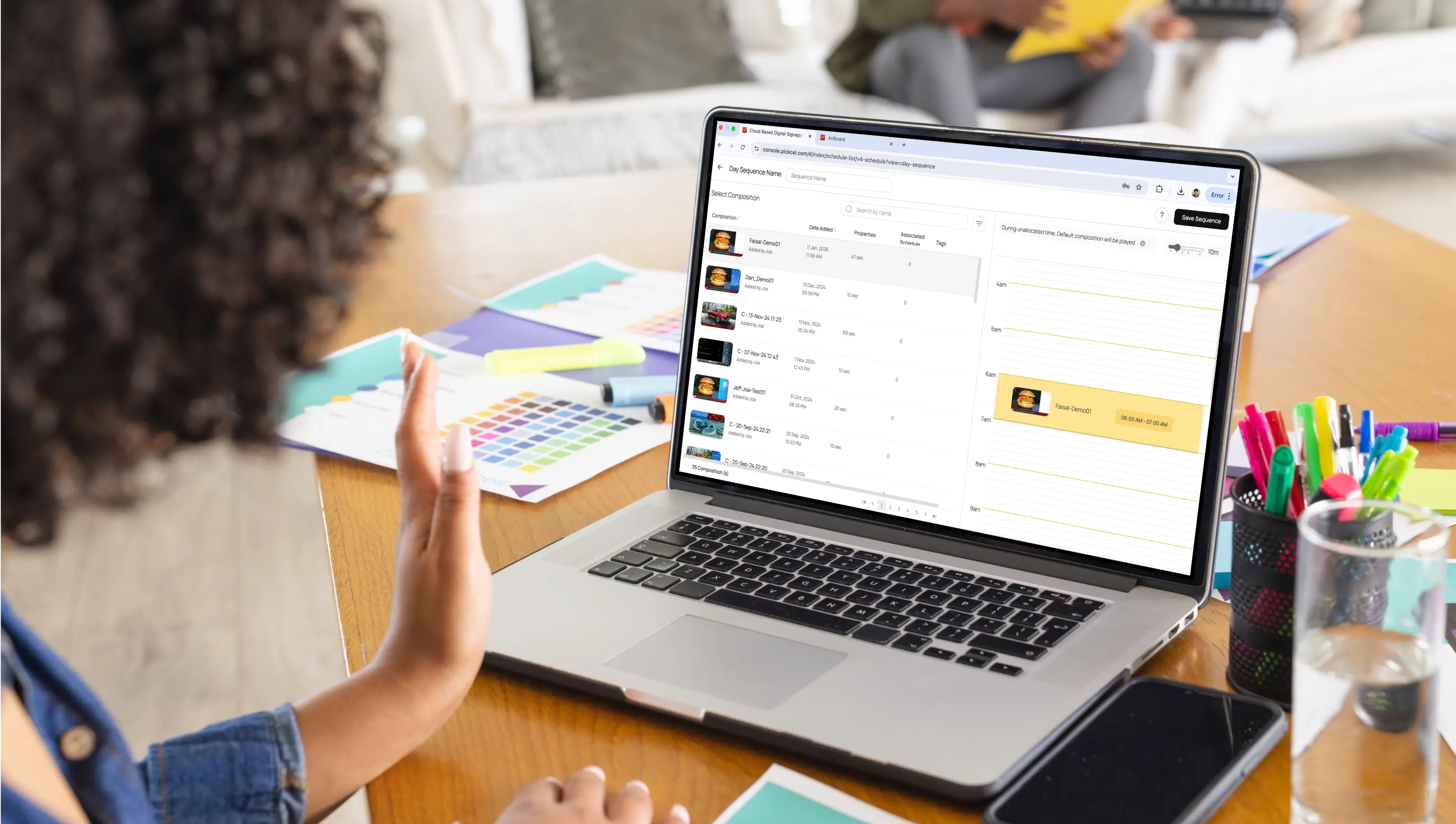
Dec 19 2023
8 min read

Digital signage plays a crucial role in contemporary marketing and communication strategies, capturing attention with its dynamic and captivating content. As businesses from diverse industries adopt this influential tool, they encounter certain hurdles during implementation.
In this blog, we delve into the common challenges faced when implementing digital signage and present practical troubleshooting strategies to overcome them.
Here is a list of 5 common challenges while implementing digital signage:
Digital signage relies on the seamless integration of hardware components and software platforms. However, compatibility issues can arise, leading to distorted content or system malfunctions. During digital signage implementation, a common challenge is hardware and software compatibility. For example, if the media player doesn’t support the display’s resolution, it can result in poor visual quality.
To overcome this challenge, assess hardware and software compatibility thoroughly beforehand. Conduct pilot tests to ensure the components work well together. Additionally, keep software updated with necessary updates and patches to enhance compatibility and system performance.
A stable internet connection is vital for delivering timely and uninterrupted content. Poor connectivity can cause delays or disruptions in content playback, negatively impacting user experience.
Additionally, network security concerns pose a significant risk to digital signage systems. Implementing reliable and fast internet connections and robust network security measures, such as encryption and regular security audits, can help mitigate these challenges.
Check out: Best practices for designing a solid digital signage network
Creating engaging and relevant content is essential for capturing the audience’s attention. Lackluster or outdated content doesn’t make an impact. Additionally, scheduling and updating content can become cumbersome without proper management tools.
To overcome these challenges, focus on creating compelling content through visually appealing elements, videos, and interactive features. Utilize content management systems to streamline content scheduling and updates, enabling efficient content management and timely information dissemination.
Strategic placement of digital signage displays is crucial for maximum impact. Choosing the wrong location can limit visibility and diminish the effectiveness of the message. Additionally, lighting conditions and glare can affect display readability.
Conducting site surveys, testing for optimal viewing angles, and using anti-glare screens or adjusting lighting can enhance visibility and ensure content is easily visible to the target audience.
Read more: Everything you need To know about outdoor and indoor digital signage
Technical issues can disrupt the smooth functioning of digital signage software. Display freezing, media player malfunctions, or system crashes can interrupt content playback and lead to frustration.
Regular system maintenance, including software updates and hardware checks, is vital to prevent such issues. Additionally, troubleshooting common issues and seeking assistance from technical support can help resolve complex problems.

Looking for troubleshooting plans for your digital signage? Read on:
Test compatibility between devices and platforms to identify any potential issues. Use compatibility checklists and conduct pilot tests before implementation. Keep software updates and patches up to date to access new features and bug fixes.
Implement reliable and fast internet connections to ensure smooth content delivery. Enhance network security measures through encryption, authentication mechanisms, and regular security audits.
Create engaging and dynamic content by incorporating visually appealing elements and interactive features. Utilize content management systems for streamlined scheduling and updates, improving content relevance and timeliness.
Conduct site surveys to determine optimal viewing angles and suitable locations. Use anti-glare screens or adjust lighting conditions to enhance display visibility.
Perform regular system maintenance, including software updates and hardware checks. Troubleshoot common issues independently and contact technical support for complex problems.
Also read: digital signage security guide
Some of the best practices for digital signage implementation and troubleshooting are as follows:
Define specific objectives, such as increasing brand awareness or driving sales.
For example, set a goal to increase foot traffic by 20% within three months through digital signage advertising.

Foster teamwork and exchange expertise between IT and marketing departments.
For example, IT experts can assist in selecting the right digital signage hardware and software for marketing campaigns.
Establish protocols for monitoring digital signage performance and addressing issues promptly.
Monitoring the content engagement metrics to identify areas for improvement and make data-driven decisions.
Recognize when complex challenges arise and seek help from experienced vendors or consultants. For instance, consult a digital signage expert to optimize content delivery and ensure compatibility.
Assess compatibility between media players, displays, and software platforms and test different media players to ensure seamless integration and optimal visual quality.
Implement reliable internet connections and network security measures. For example, use a dedicated high-speed network connection to ensure smooth content delivery without interruptions.
Create compelling and dynamic content that resonates with the target audience. For instance, Incorporate interactive elements, such as quizzes or polls, to engage viewers and gather valuable data.
Implementing digital signage comes with common challenges such as hardware and software compatibility, connectivity issues, content management, and display visibility. To overcome these challenges, thorough assessment of compatibility, regular monitoring, and seeking professional assistance when needed are crucial.
Collaboration between IT and marketing teams ensures a successful implementation process. Practices, including proper planning, goal-setting, and regular maintenance, contribute to optimal performance. Troubleshooting strategies, such as conducting pilot tests and keeping software up to date, help address issues effectively.
By adopting these strategies, businesses can optimize digital signage’s impact, enhance audience engagement, and achieve their marketing goals. In conclusion, compatibility, connectivity, content management, and visibility challenges, businesses can unlock the full potential of digital signage.





Dec 19 2023
8 min read

Dec 14 2023
8 min read

Dec 8 2023
8 min read

Dec 6 2023
5 min read
Take complete control of what you show on your digital signage & how you show it.
Start Free Trial Schedule My Demo